#congo river basin
Explore tagged Tumblr posts
Text
The Congo
#the congo#Congo#africa#world travel facts#Congo river#Congo basin rainforests#Pygmy tribe#bonobo#nouabale-ndoki national park#odzala national park#brazzaville#diosso gorge#travel#travelfacts#tourism#worldfacts#naturaltourism#geotourism
4 notes
·
View notes
Text

African Knifefish - is a member of the Featherback and Knifefishes family. It is widely distributed in tropical Africa, in the Nile, Chad, Niger, Ogowe and Congo basins. Also present in coastal rivers in Sierra Leone, Liberia, Togo, Benin and Cameroon. It prefers quiet waters with vegetation. It can produce barking sounds and it comes to the surface from time to time to swallow air. Feeds at dusk and during the night on worms, crustaceans, insects and snails. It can reach a maximum length of 30 cm (about 12 inches). https://www.redbubble.com/shop/ap/152957627
1 note
·
View note
Note
Do you have any bichir to share? My polycule has one and he's still growing. It's very fun to watch!
OK, so this is one of my absolute favorite groups of fishes! I love these little dragons...

Barred Bichir (Polypterus delhezi), family Polypteridae, family Playpteriformes, found in the Congo River System of West Africa
photograph by Hampus Hertzman

Ornate Bichir (Polypterus ornatipinnis), family Polypteridae, family Playpteriformes, found in Lake Tanganyika and the Congo River basin in Central and East Africa
photograph by The Wet Spot


Saddled Bichir (Polypterus endlicherii), family Polypteridae, family Playpteriformes, found in lakes and rivers systems across central Africa
photograph by GoodJoseph & GibbyThick
1K notes
·
View notes
Photo
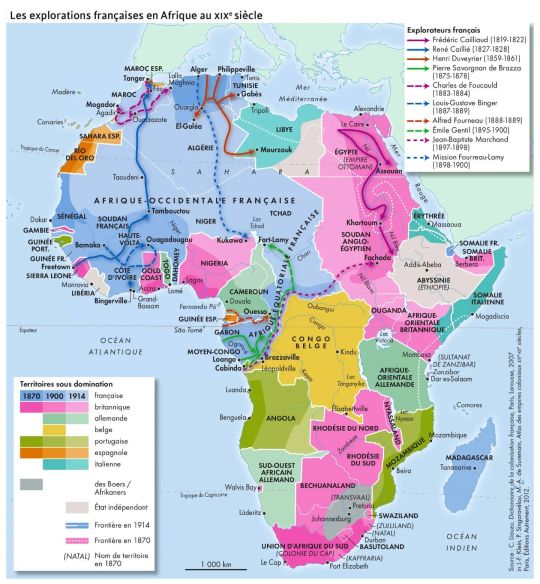
French explorations in Africa in the 19th century
« Nouvel atlas de l'histoire de France », Autrement, 2016
by cartesdhistoire
In the 19th century, a vast movement of exploration of lands unknown to Europeans developed, supported by scientific institutions. The figure of the explorer became familiar to the public, and their stories contributed to the creation of a specific imagination, filled with exoticism and adventure. Perhaps the most evocative name is that of René Caillie, the first Westerner to reach Timbuktu. Another remarkable figure is Pierre Savorgnan de Brazza, a French naval officer born in Italy who explored the Congo (1874-1882).
From the 1880s to the 1890s, European expansion accelerated from sometimes ancient coastal footholds, such as French and British forts in West Africa or Portuguese ones in Angola. The Berlin Conference (1884-1885) set the rules, enforcing effective occupation of land to colonize it. It also guaranteed freedom of movement and trade on major rivers (Niger, Congo). The drawing of colonial boundaries, often complex to define on the ground in densely populated areas, and the colored plaques on the maps should not mask the fact that the appropriation of the territory was progressive and often very loose.
During the conquest, the military consisted of the powers in place (sometimes themselves of European origin, as in the Boer republics of Orange and Transvaal, which eventually became British in 1902). Treaties to share the territories multiplied, which did not avoid crises like the one at Fashoda in 1898, where the French and British clashed for control of the Upper Nile—and more broadly for the completion of their expansion projects: the Dakar-Djibouti link for the French, and the Cairo-to-Cape Town axis for the British. This led to the extension of British influence over the entire Nile basin.
98 notes
·
View notes
Text
Daily fish fact #756
Spotted lungfish!

It rarely has to aestivate as its habitat, middle and lower Congo River basin, does not often dry up completely. Like other lungfish, it lacks marginal teeth and instead uses dental plates to crush its food.
74 notes
·
View notes
Text
Cryptotaxonomy Tournament: Reptiles
Note: these creatures do not actually exist. The following descriptions are facetious
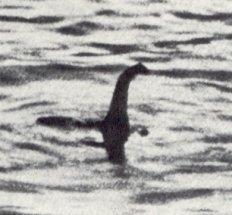

Plesiosauria. This clade of ''extinct'' and ''pre-historic'' marine reptiles includes the Loch Ness Monster and Ogopogo, large long-necked monsters that live in lakes.
Sauropoda. This ''extinct'' clade of long-necked dinosaurs has a living member in the Mokele-Mbembe, a large quadrupedal herbivore with a long neck and smooth skin, found in the Congo River Basin.
#animals#biology#polls#poll tournament#cryptozoology#cryptids#mythology#dinosaurs#Loch Ness#Nessie#Ogopogo#Mokelembembe#Plesiosauria#Sauropoda#0x0v0x7#Cryptotaxonomy Tournament#Cryptotaxonomy Tournament Round 1
79 notes
·
View notes
Text




Congo
Here are 7 Facts to Know About DR Congo, the World's Richest Country in Natural Resources,yet the most troubled country,the demons that rule this planet earth chose to keep Congo troubled because only through trouble they can loot the wealth of Congo 🇨🇩
Below are the 7 facts about Congo that you should know...
👇🏿👇🏿👇🏿👇🏿👇🏿👇🏿👇🏿👇🏿👇🏿👇🏿👇🏿👇🏿
1. Kinshasa is the second largest French-speaking city in the world with about 20 million inhabitants
2. More than 90% of consumer goods are imported.
3. The DRC is the second largest country in Africa. It shares borders with nine countries: Angola, Burundi, Central African Republic, Congo, Rwanda, South Sudan, Tanzania, Uganda and Zambia.
4. The inhabitants of the DRC represent more than 200 ethnic groups, with nearly 250 languages and more than 450 tribes.
5. The Congo Basin rainforest plays a crucial role in regulating the global climate. It is often called the "lungs of Africa".
6. The DRC has one of the largest hydroelectric dams in the world, the largest water supply, the second longest river in the world, the second largest forest after the Amazon, the oldest and largest park in Africa (Virunga).
7. The DRC is the only country in the world where the okapi is found, the largest deposit of minerals in the world: copper, lithium, cobalt, gold, coltan, cassiterite, niobium, gold, diamond, uranium, etc. Hiroshima and Nagasaki were bombed by rhe USA with uranium USA stole and looted from the southeast of the DRC. It has the second largest island in Africa (Idjwi Island), the second deepest lake in the world after Lake Baikal in Russia, 12 national parks with all kinds of wildlife...
The DRC is the hidden secret of the blood money business world on this earth.
21 notes
·
View notes
Text

In several Bantu mythologies, mokele-mbembe (also written as "mokèlé-mbèmbé") is a mythical water-dwelling entity that is believed to exist in the Congo River Basin. Variously described as a living creature or a spirit, mokele-mbembe's descriptions vary widely based on conflicting purported eyewitness reports, but it is often described as a large quadrupedal herbivore with smooth skin, a long neck, and a single tooth or horn, much like the extinct lineage known as sauropods.

In the early to mid 20th century, the entity would become a point of focus among adherents of cryptozoology and young Earth creationism, resulting in numerous expeditions led by cryptozoologists and/or funded by young Earth creationists and other groups with the objective to find evidence that invalidates or contradicts the scientific consensus regarding evolution. Paleontologist Donald Prothero remarks that "the quest for Mokele-Mbembe ... is part of the effort by creationists to overthrow the theory of evolution and teaching of science by any means possible". Additionally, Prothero noted that "the only people looking for mokele-mbembe are creationist ministers, not wildlife biologists."

Most mainstream experts believe that mokele-mbembe, as reported by Congolese natives, was probably inspired by the black rhinoceros, which once thrived in the region. Historian Edward Guimont has argued that the mokele-mbembe myth grows out of earlier pseudohistorical claims about Great Zimbabwe, and in turn influenced the later reptilian conspiracy theory.

9 notes
·
View notes
Text
(WIP) Rivers of Ehrð
So this has been in the works for several months, and will be likely for several more, but i have been working on a global map showing the river networks of my fictional version of Earth. They are broadly the same as the real world but due to differences in rainfall and climate there are differences. (open for zoomed in images)

There are no endorheic basins, meaning all water eventually reaches the ocean, and global mean sea level is about 20 metres lower.
Anyway, I have just finished mapping and tracing out the basins for every river which is over 1000km long in the real world, as well as some others in areas that are too arid in real life to be true rivers.
Regional Maps
For convenience of reading and because I haven't got names for everything yet, I will use the real life region names. If a river has it's own name in my world I will also use that.
I will list the rivers in a clockwise direction along coastlines, usually starting from the edge of the map. rivers on islands will go after the rest. Green names mean that i have my own name for the river in the fictional world.
Northern North America

Fraser
Kuskokwim
Yukon
Mackenzie
Rest of North America

Misinipi (Churchill)
Nelson
St Lawrence
Mississippi
Brazos
Colorado (Texas)
Grande
Santiago
Colorado (The one with the Grand Canyon)
Columbia
South America

Magdalena
Orinoco
Essequibo
Amaru (Amazon)
São Francisco
Plait/Plate (la Plata)
Europe

Kızıl
Dona (Don)
Dnieper
Dniester
Danube
Tagus
Loire
Rhine
Elbe
Blac/Black (river draining what would be the Baltic Sea)
Northern Dvina
Pexohra (Pechora)
I'm not listing the ones on the island next to Britain, which is named Fairixant
North Africa

Niger
Volta
Gambia
Senegal
Tamanrasset
Hamra (Saguia el-Hamra)
Draa
Chott el Djerid
Sahabi
Nile
Southern and Central Africa

Jubba
Zambezi
Limpopo
Orange
Congo
Ogooué
India and Middle East

Patma (Ganges-Brahmaputra)
Godavari
Krishna
Narmada
Indus
Helmand
Minab
Shatt al-Arab (Arab)
Matti
East and Southeast Asia

Songhua
Huwan (Huang He/Yellow)
Yangtze
Pehrl (Pearl)
Red/Hong
Mekong
Lapaina (Irriwaddy/Salween)
Western Siberia

Corta (Ob)
Onesi (Yenisei)
Eastern Siberia

Khatanga
Lena
Suluma (Kolyma)
Anian (Anadyr)
Amur
Oceania and Borneo

Mamberamo
Sepik
Fly
Murray
Kati Thanda
Flinders
Kapuas
Barito
6 notes
·
View notes
Text
4 Day Gombe Streams Chimpanzee Trekking Luxury Tour

This four-day Gombe Streams Chimpanzee Trekking Simi-Luxury Trip will take you to Gombe National Park, Tanzania’s second-smallest park, a unique chimpanzee habitat on the sandy northern coast of Lake Tanganyika, surrounded by rocky hills and river basins. Jane Goodall’s great research has helped the chimpanzees in Gombe get used to people. The behavior research initiative she started in 1960 is now the world’s longest-running study of its sort. Kremlin, an adolescent when Goodall first arrived in Gombe, is the last known member of the original community.
Gombe Stream National Park is located in western Tanzania, 16 kilometers from Kigoma Town and the border with the Congo. For many years, local primatologist Jane Goodall studied and worked in this park. This luxury trip will give you an experience of a lifetime while you spend your two nights at Mbali mbaliKasekela Luxury Tented Camp, the only luxury camp facility in the park owned by TANAPA. One last night will be spent at either Aqua Lodge, Sunset Vista Hotel, or Green View Lodge.
Know More About- https://halisiaafrica.com/4-day-gombe-streams-chimpanzee-trekking-luxury-tour
3 notes
·
View notes
Text
Titan History: The Awakened Gods
Welcome once again to Monarch: After Dark, the digital gateway between you and the organisation dedicated to understanding and navigating this troubled new world we live in.
For today's communication, we embark on the undertaking of rounding off the remaining handful of Titans known to have been awakened by Monster Zero in 2019. Currently, the Monarch database does not hold enough information on each Titan to warrant giving them their own entries, whether due to digital sabotage, loss of data amid containment breaches, or some other cause.
If more data does resurface, we will act accordingly and revisit these Titans as is relevant, but for now, let us round off the remaining Awakened Gods.
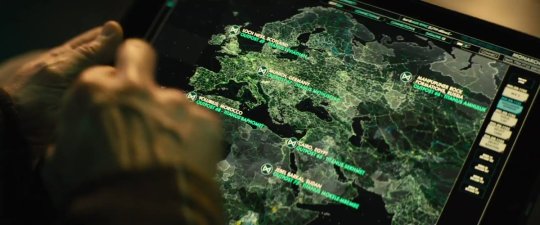
(Pictured above: Part of a global Titan map, containing the locations of outposts and the name of the Titan they are studying)
This list will be compiled based on numerical order of Monarch outposts.
-----
Titanus Leviathan
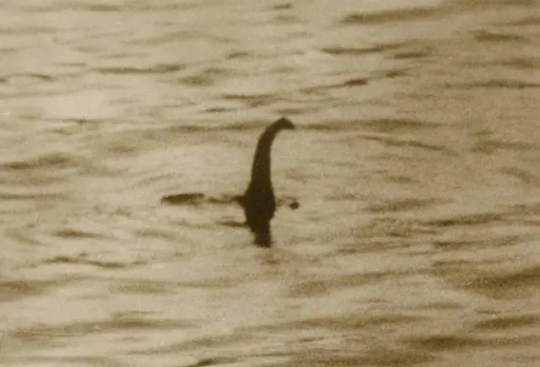
(Pictured above: Infamous 1933 photo of the Loch Ness Monster, possibly the first notable sighting of Leviathan)
Formerly contained within Outpost 49, Leviathan was found within Loch Ness, Scotland by Monarch. This Titan gets its name from the aquatic counterpart to Titanus Behemoth from the Hebrew Bible.
-----
Titanus Quetzalcoatl
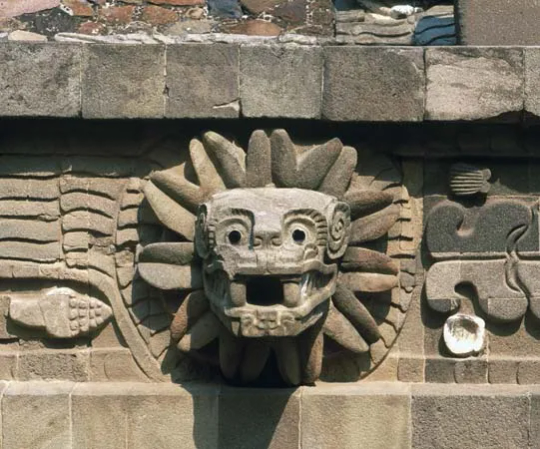
(Pictured above: A stone carving of Quetzalcoatl, found on a temple in Teotihuacan, Mexico)
Formerly contained within Outpost 57, Quetzalcoatl was found within Machu Piccu, Peru. This Titan gets it name from a feathered Aztec serpent god.
-----
Titanus Sekhmet
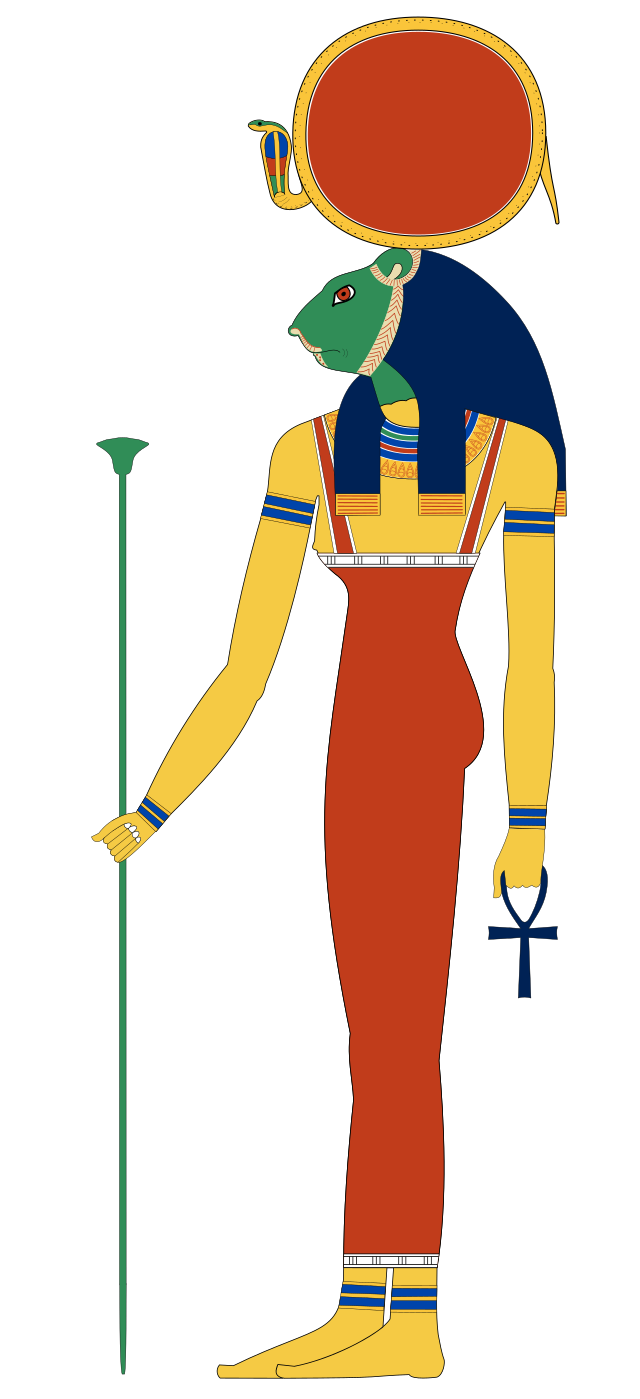
(Pictured above: Depiction of Sekhmet in ancient Egyptian artwork)
Formerly contained in Outpost 65, Sekhmet was found in Cairo, Egypt. This Titan gets its name from the Egyptian goddess of medicine.
-----
Titanus Baphomet

(Pictured above: A statue of Baphomet flanked by two children, unveiled at the Satanic Temple in 2015)
Formerly contained in Outpost 68, Baphomet was found in Volubilis, Morocco. This Titan got its name from a perversion of the name of the prophet Mohammed, later associated with a goat-like diety in the 19th Century with ties to Satan.
-----
Titanus Mokele-Mbembe
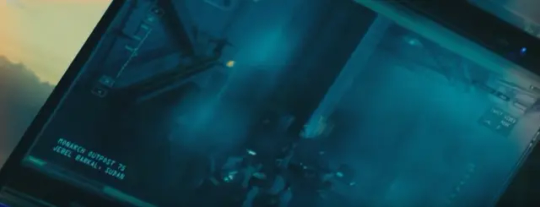
(Pictured above: Recovered footage from Outpost 75, showing Mokele-Mbembe's escape obscured by smoke, circa. 2019)
Titanus Mokele-Mbembe, formerly contained in Outpost 75, in Jebel Barkal, Sudan, got its name from a water-dwelling diety in the Congo River Basin, later becoming popularly depicted as a sauropod-like cryptid in the 20th Century.
In reality, the Titan is a massive quadrupedal beast with a snake-like tail, a head much like a hairless elephant, with jaws that open like a crocodile's, a horn atop its head that glows a faded green, and downward-facing tusks.
When Monster Zero awoke the world's Titans, the director of Outpost 75, Dr. Kearns, refused to kill the Titan under the belief that the military just wanted an excuse to kill the Titans. Mokele-Mbembe killed most of the outpost's staff upon its escape, pulling some into its mouth with its trunk. Upon reaching the surface, Mokele-Mbembe battled Monarch forces and the Egyptian military before being pacified by the ORCA.
-----
Titanus Abbadon

(Pictured above: Artistic depiction of Abbadon battling Christian, from The Pilgrim's Progress by John Bunyan)
Formerly contained in Outpost 77, Abbadon was found in the Devil's Tower, Wyoming. This Titan got its name from a place of destruction, the 'sister location' to Hell (Sheol), a name later used for an angel who commanded an army of locusts in the Book of Revelations.
-----
Titanus Yamata no Orochi

(Pictured above: A woodblock print of the storm god Susanoo slaying Yamata no Orochi, by Toyohara Chikanobou)
Formerly contained within Outpost 91, Yamata no Orochi was found by Monarch in Mount Fuji, Japan. This Titan gets its name from an 8-headed serpent from Japanese mythology.
While the only current footage relating to Yamata no Orochi shows its outpost collapsing from the Titan's escape, it is known that the Titan had attacked a cruise ship in Japanese waters before being pacified by the ORCA. The Titan has been reported by one account to also have multiple heads.
-----
Titanus Typhon

(Pictured above: Depiction of Zeus aiming a thunderbolt at Typhon, upon a black-figured hydria, circa. 540-530 BC)
Formerly contained within Outpost 92, Typhon was found within Angkor Watt, Cambodia. This Titan gets its name from a serpentine giant from Greek mythology, the father of monsters.
A member of Monarch's primary mythology department, Greg Keyes, had lost vital information regarding Typhon during the Titan's awakening in 2019. To this day, he still working to retrieve this data from a corrupted database.
-----
Titanus Bunyip

(Pictured above: Artistic depiction of Bunyip in 1935, by Gerald Markham Lewis)
Formerly contained in Outpost 99, Bunyip was found by Monarch within Uluru (Ayer's Rock), Australia. This Titan gets its name from a swamp-dwelling creature in South Australian aboriginal folklore.
-----
And there you go! We apologise for being unable to provide much more information on these Titans, but rest assured we are hard at work scouring our databases and working to recover what we can so that we can provide more detailed accounts in future.
Until next time,
Monarch: After Dark
#monarch#monarch after dark#monsterverse#godzilla king of the monsters#godzilla kotm#godzilla 2019#leviathan#loch ness monster#cryptids#quetzalcoatl#sekhmet#baphomet#mokele-mbembe#abbadon#yamata no orochi#orochi#typhon#bunyip
11 notes
·
View notes
Text
Faeries in the Congo
The idea of faeries spins a fascinating tale in the lush and enigmatic landscapes of the Democratic Republic of the Congo, a region recognized for its rich biodiversity and intricate cultural fabric. The indigenous beliefs of the Congo provide a distinct viewpoint on these mythical creatures, but the Western perception of faeries frequently revolves around delicate, winged creatures from mythology. Communities frequently view them as natural spirits essential to their spiritual and cultural fabric. The dense canopy and rich ecosystem of the Congo Basin, the second-largest tropical rainforest in the world, make it an ideal setting for tales of otherworldly creatures. There are stories of spirits living in the forests, rivers, and mountains among many different ethnic groups, including the Bakongo, Luba, and Mongo. These spirits, akin to faeries, are believed to possess abilities that impact both human affairs and the natural world. They represent human-environment relations and guard the land.

These spirits play a variety of roles. People often view them as the forest's guardians, preserving the natural order. This idea emphasizes the value of sustainable life and demonstrates profound respect for the environment. Additionally, people view the spirits as intermediaries between the spiritual and material realms, offering guidance and wisdom to those who seek them out. People perform rituals and ceremonies to thank these deities and seek their blessings for abundant harvests, protection, and healing. This kind spirit in Congolese folklore can also be irrational, reflecting the unpredictability of their surroundings. The idea of this duality is prevalent in faerie lore around the world; depending on how humans approach them, these entities can bring luck or mischief. The intersection of indigenous beliefs and colonial influences has further impacted the Congo's image of faeries. European colonists imposed their own stories and meanings of faeries during the colonial era, frequently writing off indigenous beliefs as mere superstition. Nonetheless, the adaptability of Congolese cultures made it possible for a synthesis of ideas to occur, in which native understandings of spirits coexisted alongside and occasionally modified Western notions.

The folktales of faeries and spirits are still an essential component of Congo's cultural legacy today. Oral transmission through generations preserves the knowledge and morals of their forefathers. These stories provide moral lessons about the effects of human behavior on the environment and about respect for nature, in addition to being entertaining. The stories about these spirits have new relevance in the modern era, when the Congo deals with issues like deforestation and climate change. They urge a return to peaceful cohabitation by serving as a reminder of the complex interdependence that exists between humans and nature. Thus, the Congolese faeries are more than just fantastical animals; they are representations of resiliency, cultural identity, and optimism for a sustainable future.
5 notes
·
View notes
Text
List of countries that deserve no representation in the UN or to be recognised as subjects of international law, on the basis that they refuse to have a real name:
1. "South Africa" (that's a geographical expression)
2. "Georgia" (just call yourself Sakartvelo, idiot)
3. "The United States" and its contemptible colony "The United Kingdom" (self-explanatory)
4. "Congo" (most of the Congo Basin is located in the DRC, which is already called Congo, so it's easy to choose who should change its name).
5. "Central African Republic" (these are just adjectives that can apply to like, 10 different countries).
6. "East Timor" (it's a coward's move to name your country after part of an island. Ireland doesn't call itself South Ireland).
7. "Guinea" its "Bissau" and especially its "Equatorial" variants (those countries are completing some 60 years of independence and still use fake colonial names. It's like living in your parent's basement in your mid-30s)
8. "Iceland" ('hee hoo, Iceland is green and Greenland is icy' hasn't been funny or insightful for years)
9. "Ivory Coast" (Côte d'Ivoire isn't any less of a fake stupid name)
10. "Kiribati" (I feel ati if when you detide to utie the Latin Alphabet for your language you are respontible for not uting it in tiuch a way that the S tiound is repretiented by "ti")
11. "Israel" (self-explanatory)
12. "The Netherlands" (also a geographical expression but one that is evocative of the name for an evil region of a poorly constructed fantasy worldbuilding project).
13. "New Zealand" (Old Zealand had the decency to create its own real name).
14. "Niger" (the only part that deserves the name are the regions of Niamey, Tillabéri and Dosso, all the rest has nothing to do with it, plus Nigeria has more of the river - including the delta - and already took name).
15. "North Macedonia" (tell the Greeks to go to court if they're so upset about your name. Everyone knows copyright laws aren't respected in Eastern Europe anyway)
16. "Philippines" (Philip hasn't been your - foreign - head of state for over 400 years it's time to get over it)
17. "Sierra Leone" (we know you don't speak Italian. Stop it).
18. "South Sudan" (see, South Africa)
19. "United Arab Emirates" (come on now)
4 notes
·
View notes
Text

•●🍯THE HONEYCOMB🍯●•
✝oday's honey🌱
April 13, 2024
*George Grenfell*
_Knights of the Kingdom Series_
🛐📈📈📈📈📈📈📈📈 🛐
George Grenfell was born at Sancreed, near Penzance, Cornwall.
In 1875 he went as a Baptist missionary to Cameroon, West Africa, with Alfred Saker (1814–80), and thereafter did some exceedingly important work in exploring little-known rivers of the Congo Basin. In 1877 he removed to Victoria and explored the Wouri River and in the following year he ascended Mongo ma Loba Mountain.
In 1881, cooperating with the Rev. T. J. Comber and others, he established a chain of missions at Musuko, Vivi, Isangila, Manyanga, and other points, and in 1884, in a small steam vessel, he explored the Congo to the equator.
He established headquarters at Arthington, near Leopoldville, in 1884, and launched on Stanley Pool a river steam vessel, the Peace, in which he explored the Kiva, the Kwango, and the Kasai rivers, and discovered the Ruki.
He was awarded in 1887 the Patron's Gold Medal of the Royal Geographical Society for his explorations in the Cameroons and Congo.
From 1893 to 1900 Grenfell remained chiefly at Bolobo on the Congo, where a strong mission station was established.
After a visit to England in 1900, he started a systematic exploration of the Aruwimi River and by November 1902 had reached Mawambi, about eighty miles from the western extreme of the Uganda protectorate.
Between 1903 and 1906 Grenfell was busy with a new station at Yalemba, establishing mission stations and exploring the Congo.
His work opened up that part of Africa to the Gospel and many lives were transformed because of his sacrifice. By exploring the Congo, he opened it up for development and fought against the evil Belgian administration. Grenfell died after a bad attack of blackwater fever at Basoko on 1 July 1906.
•°•°•°•°•°•°•°•°•°•°•°•°•°•°•°•°•°•°•°•°•°•°•°•°•°•°•°•°•°•°•°•°•°•°•°•°•°•°•°•°•°•°•°•°•°•°•°•°•°•°•°•°•°•°•°
THE HONEYCOMB©
Bless a life by sharing
https://whatsapp.com/channel/0029Va7eX2L6xCSOeoMRG53p
https://web.facebook.com/honeycombdailydevotional/
https://t.me/thehoneycombdailydevotional
#christ lover#his princess#his power#youtube#quiet spiritte#quiet spirittt#christian bible#christianity#jesus christ#koinonia
2 notes
·
View notes
Text
Cryptid Tamers 🩻
Crypto #46: Mokele-mbembe

The mighty sauropod-like beast ruling within the Congo River Basin.
Attack: 100%
Defense: 95%
Speed: 40%
Stamina: 50%
2 notes
·
View notes
Text

Vundu Catfish - also known as Sampa is a member of the Airbreathing catfishes family. It is native to Nile and Congo River Basins, It is also found in other areas of Africa. It is found in large deep rivers within the mainstream or in deep pools and lakes or backwaters. It is a facultative airbreather, breathes mainly on gills with supplemental gas exchange from aerial breathing when conditions are poor or it is too costly to obtain oxygen from water. It feeds on any available food, including fish and other small vertebrates. It also scavenges off large carcasses and offal from riverside villages. It can reach a maximum length of 150cm (about 59 inches) and a maximum published weight of 55 kg (about 121 pounds). https://www.redbubble.com/shop/ap/150983007
3 notes
·
View notes